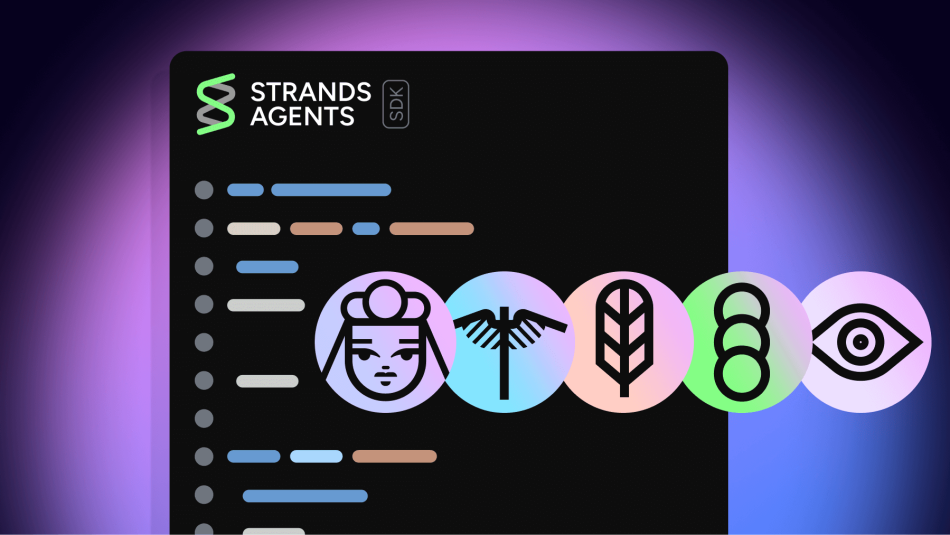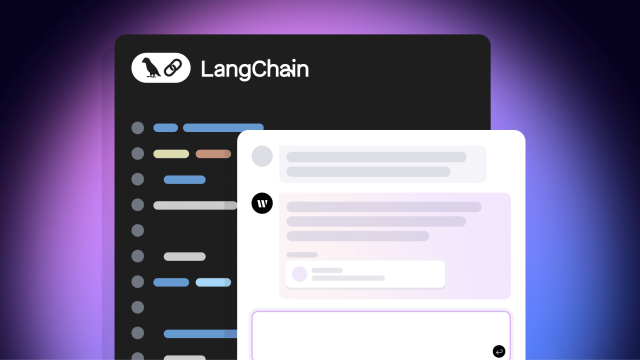Product updates
– 8 min read
Enterprise-grade AI meets multi-agent orchestration: WRITER integrates with Strands Agents SDK

The WRITER integration with Strands Agents SDK is a game-changer for developers building complex AI applications. By combining Strands’ multi-agent orchestration with WRITER’s enterprise-grade language models, you can create powerful AI solutions with just a few lines of code. This integration enables key features like smooth collaboration between agents, strong session management, and more. An example use case explores how to create a multi-agent workflow that uses Strands Agents and WRITER’s language models to perform web research and content development.
As AI applications become increasingly sophisticated, developers need tools that make it easier to build complex agents. With Strands Agents, developers can create simple, reliable, and production-ready AI agents in just a few lines of code.
By bringing WRITER’s enterprise-grade language models into the Strands ecosystem, developers gain access to Palmyra X4 and X5 via AWS Bedrock and our full Palmyra family of transparent LLMs through direct integration. This integration plays a key role in enabling developers to build and deploy flexible, scalable multi‑agent applications with support for multi‑agent patterns, durable sessions, native asynchronous support, and smooth Agent-to-Agent communication.
Key features
The WRITER Strands integration comes with a few powerful features that enable developers to easily build and deploy multi-agent workflows with enterprise-grade language models:
- Multi-agent patterns provide improved orchestration through four intuitive primitives, making it easy for agents to collaborate, delegate, and solve complex tasks together:
- Handoffs: agents can pass control to human users when encountering tasks outside their scope, while preserving full conversational context
- Swarms: multiple agents can coordinate autonomously using shared context and working memory to solve complex tasks as a team
- Graphs: define explicit step-based agent workflows with conditional routing and decision points
- Agents-as-Tools: transform specialized agents into intelligent tools that other agents can call
- Agent-to-Agent (A2A) protocol ensures smooth communication and collaboration between agents from different platforms
- Durable session management allows agents to save conversation history and state to external stores like Amazon S3, enabling multi‑turn workflows seamlessly to resume after restarts or failures
- Native async support delivers real-time streaming of agent responses using async iterators
- WRITER’s Palmyra model support includes full access to WRITER’s enterprise-grade family of language models
- Foundation models: Palmyra X4 and X5, available either through Amazon Bedrock or directly through WRITER
- Domain-specific models: Palmyra Fin, Palmyra Med, and Palmyra Creative, available directly through WRITER
These features can be used independently or together to build strong, sophisticated, multi-agent AI applications.
Example use case: Building a multi-agent research and content creation workflow
Let’s look at an example that combines two specialized agents using the Strands Agent SDK — one powered by WRITER’s Palmyra X5 for real-time research, and the other by WRITER’s Palmyra Creative for crafting social content. The research agent uses tools like http_request to pull accurate information from the web, while the content agent transforms those findings into on-brand posts for LinkedIn and X, all automatically routed in a simple two-step workflow.
from strands import Agent
from strands.models.writer import WriterModel
from strands_tools import http_request
# Initialize the creative content model (used for writing social content)
content_model = WriterModel(
client_args={"api_key": "<WRITER_API_KEY>"},
model_id="palmyra-creative",
)
# Initialize the research model (used for factual lookups and web research)
research_model = WriterModel(
client_args={"api_key": "<WRITER_API_KEY>"},
model_id="palmyra-x5",
)
# System prompt for the content agent – gives the agent a creative, platform-aware writing style
CREATIVE_ASSISTANT_SYSTEM_PROMPT = """
You are the Creative Content Assistant. Your job is to craft imaginative, engaging, and on‑brand content for both X/Twitter and LinkedIn.
Always use vivid language, a friendly tone, and creative flair to delight and inspire the reader.
For each request:
- Write distinct content tailored to each platform’s tone and audience
- Label each section clearly as 'LinkedIn' and 'X/Twitter'
- Briefly list the steps or reasoning you used to craft the content
"""
# System prompt for the research agent – instructs it to find and summarize factual information from the web
RESEARCH_ASSISTANT_SYSTEM_PROMPT = """
You are a Researcher Assistant that gathers information from the web.
1. Determine if the input is a research query or factual claim
2. Use your research tools (http_request, retrieve) to find relevant information
3. Include source URLs and keep findings under 500 words
"""
# Create the research agent with the research model and access to external web tools
research_agent = Agent(
system_prompt=RESEARCH_ASSISTANT_SYSTEM_PROMPT,
callback_handler=None,
model=research_model,
tools=[http_request]
)
# Create the content agent with the creative writing model
content_agent = Agent(
system_prompt=CREATIVE_ASSISTANT_SYSTEM_PROMPT,
callback_handler=None,
model=content_model
)
def run_content_workflow(user_input):
# Step 1: Use the research agent to gather relevant web information
researcher_response = research_agent(
f"Research: '{user_input}'. Use your available tools to gather information from reliable sources.",
)
research_findings = str(researcher_response)
# Step 2: Feed the research into the content agent to generate social posts
content = content_agent(
f"Create X/Twitter and LinkedIn social post content based on these findings about '{user_input}': \n\n{research_findings}",
)
return content
# Example usage: run the workflow on a real announcement
response = run_content_workflow("Write a creative launch announcement for Strands Agents 1.0 from their announcement here: https://aws.amazon.com/blogs/opensource/introducing-strands-agents-1-0-production-ready-multi-agent-orchestration-made-simple/")
print(response)This example shows how to create a multi-agent workflow using Strands Agents and WRITER’s enterprise-grade language models in just a few lines of code, demonstrating how specialized agent roles can work together in sequence to process information and develop enterprise AI applications.
For more examples on the WRITER Strands integration, check out our GitHub repository.
Get started today
The WRITER Strands integration makes it easy to build powerful, multi-agent AI applications that combine Strands’ orchestration with WRITER’s Palmyra LLMs. Ready to get started? Install the WRITER models with Strands Agents using:
pip install 'strands-agents[writer]'Check out the Strands Python SDK repository and our Using WRITER with AWS Strands Agents developer docs for additional resources and examples. Reach out to us on LinkedIn to let us know what you end up building!




